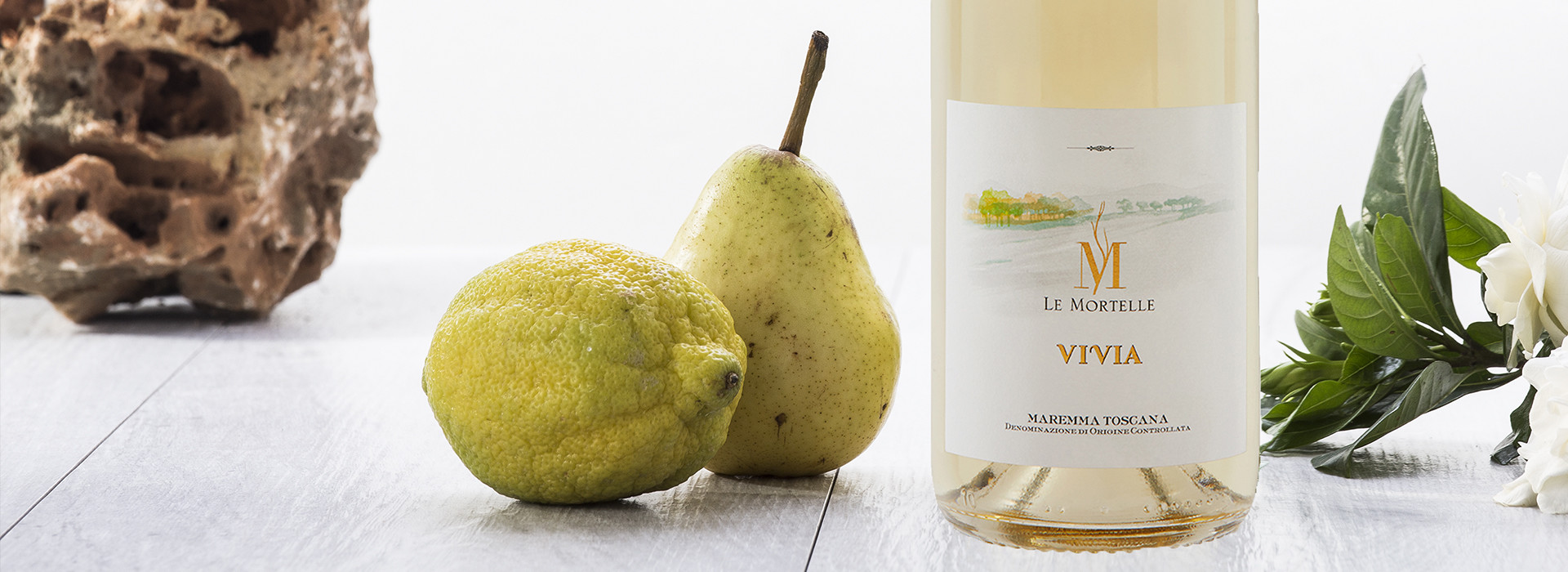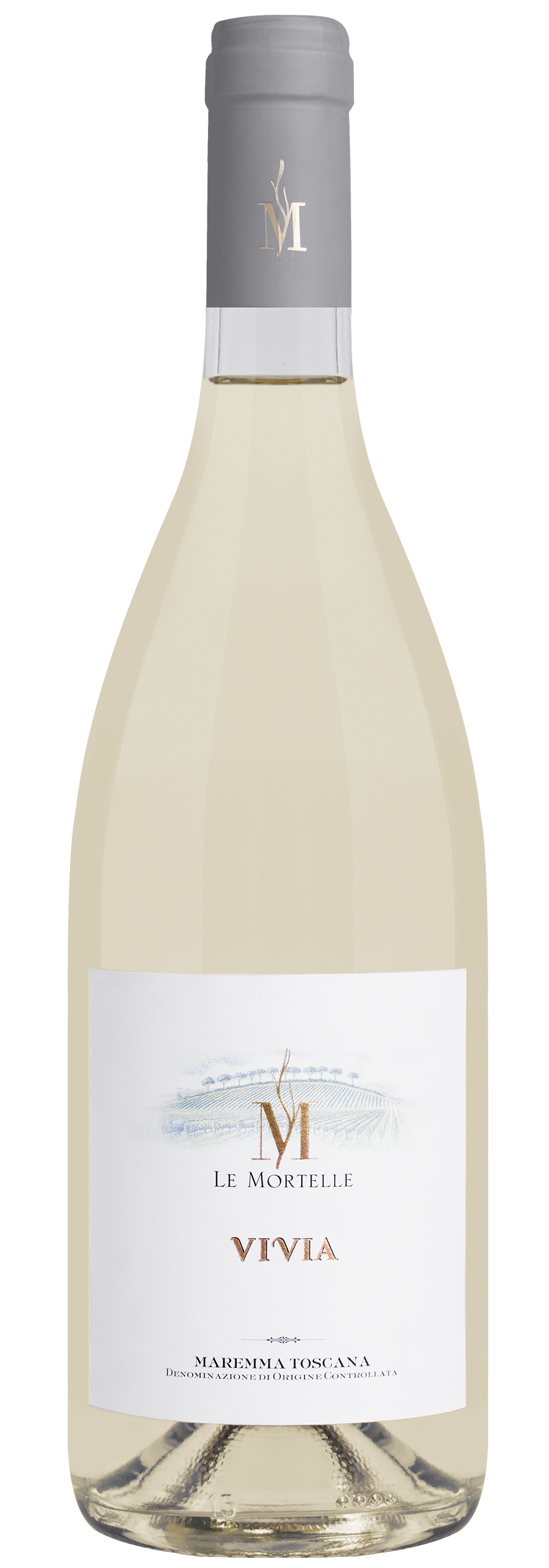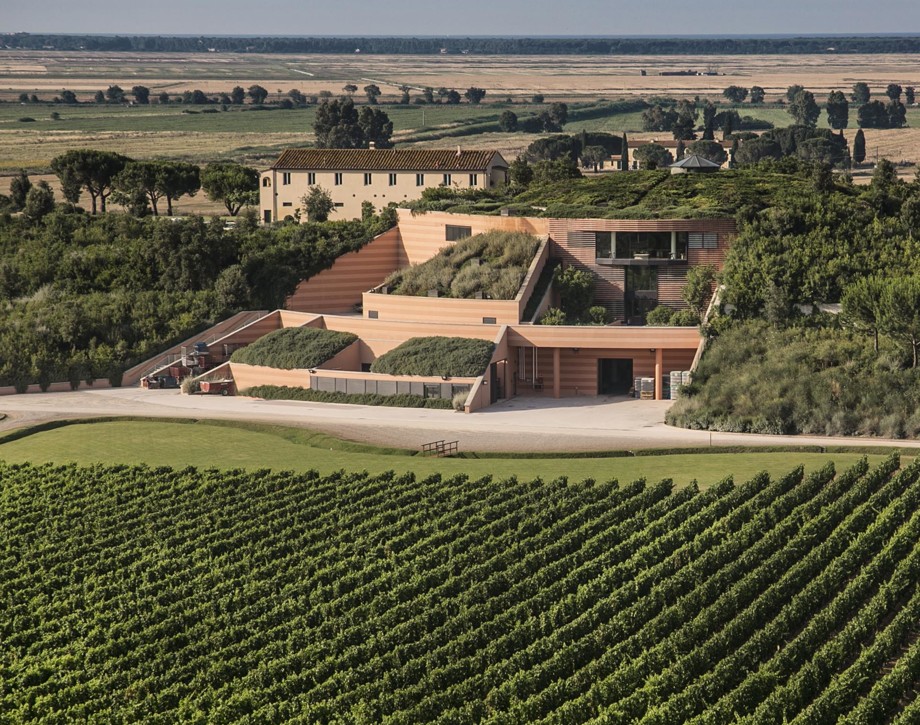Vivia

Climate
The 2016 vintage was characterized by a rather dry winter and by a mild spring, both followed by a summer season with temperature peaks during the months of July and August. The bud break and flowering took place slightly in advance of normal seasonal averages, while the bud set was right on schedule. Light rains in September and the subsequent lowering of temperatures allowed the grapes to complete the ripening process in excellent meteorological conditions, giving our white wines a surprising freshness. The picking began in late August with the Viognier and terminated with the Ansonica at the end of September.
Vinification
The individual grape varieties were fermented separately, and a small part of the Ansonica crop was harvested late in the season to give the wine a certain creaminess of texture and riper notes. On arrival in the cellar the grapes were softly pressed and then chilled for 24 hours to a temperature of 50° Fahrenheit (10° centigrade) to assist a natural static settling of impurities. The clean must was racked into stainless steel tanks, where it fermented at a temperature held to a maximum of 61° Fahrenheit (16° centigrade). The wine was given a brief three month aging period on its lees in stainless steel before bottling.
Historical Data
The Mortelle estate is in the heart of Maremma in Tuscany, near the town of Castiglione della Pescaia set in an extraordinary and fascinating position both for the territory’s unparalleled natural beauty and its historical heritage and culture. The Antinori family has been part of this territory for generations. Evidence of ownership of land in this area is recorded on a property deed dated 1863. It states their ownership of Poggio Franco, one of the best vineyards on the estate, together with other parcels of land. Since 1999, when the property was acquired, the family has dedicated their efforts to improving the vineyards and building the new winery with the firm belief that this area, slowly emerging on the Italian viticultural horizon, has great potential for the production of high quality wines. Varieties grown in this area can fully express their own characteristics as well as the exceptional qualities of the terroir. The soil is of medium consistency, sandy and loamy composed of clay and silica and in some parts of the estate is rich in rocky deposits. Vermentino and Ansonica, typical grape varieties cultivated in Tuscany’s costal area, grow alongside Viognier, a vine that has recently been planted after years of patient research to produce an elegant white wine expressing the colors and aromas of the Maremma coastline.
Tasting Notes
The impact on the nose is intense and is characterized by a very pleasurable bouquet. The aromatic complexity of this wine includes notes of ripe pear and pineapple fruit supplemented by sensations of linden tree blossoms and orange flowers. The palate is vibrant and balanced and closes with a mineral finish and an aftertaste of candied citrus fruit and lemons.

The Wine
This wine is harvested from vineyards indigenous to the Tuscan coast, a blend of Vermentino and Viognier and a small percentage of Ansonica: a successful result of patient research that produced an elegant white wine expressing the colors and aromas of the Maremma coastline.

Climate
The 2016 vintage was characterized by a rather dry winter and by a mild spring, both followed by a summer season with temperature peaks during the months of July and August. The bud break and flowering took place slightly in advance of normal seasonal averages, while the bud set was right on schedule. Light rains in September and the subsequent lowering of temperatures allowed the grapes to complete the ripening process in excellent meteorological conditions, giving our white wines a surprising freshness. The picking began in late August with the Viognier and terminated with the Ansonica at the end of September.
Vinification
The individual grape varieties were fermented separately, and a small part of the Ansonica crop was harvested late in the season to give the wine a certain creaminess of texture and riper notes. On arrival in the cellar the grapes were softly pressed and then chilled for 24 hours to a temperature of 50° Fahrenheit (10° centigrade) to assist a natural static settling of impurities. The clean must was racked into stainless steel tanks, where it fermented at a temperature held to a maximum of 61° Fahrenheit (16° centigrade). The wine was given a brief three month aging period on its lees in stainless steel before bottling.
Historical Data
The Mortelle estate is in the heart of Maremma in Tuscany, near the town of Castiglione della Pescaia set in an extraordinary and fascinating position both for the territory’s unparalleled natural beauty and its historical heritage and culture. The Antinori family has been part of this territory for generations. Evidence of ownership of land in this area is recorded on a property deed dated 1863. It states their ownership of Poggio Franco, one of the best vineyards on the estate, together with other parcels of land. Since 1999, when the property was acquired, the family has dedicated their efforts to improving the vineyards and building the new winery with the firm belief that this area, slowly emerging on the Italian viticultural horizon, has great potential for the production of high quality wines. Varieties grown in this area can fully express their own characteristics as well as the exceptional qualities of the terroir. The soil is of medium consistency, sandy and loamy composed of clay and silica and in some parts of the estate is rich in rocky deposits. Vermentino and Ansonica, typical grape varieties cultivated in Tuscany’s costal area, grow alongside Viognier, a vine that has recently been planted after years of patient research to produce an elegant white wine expressing the colors and aromas of the Maremma coastline.
Tasting Notes
The impact on the nose is intense and is characterized by a very pleasurable bouquet. The aromatic complexity of this wine includes notes of ripe pear and pineapple fruit supplemented by sensations of linden tree blossoms and orange flowers. The palate is vibrant and balanced and closes with a mineral finish and an aftertaste of candied citrus fruit and lemons.

Fattoria Le Mortelle
The Mortelle estate is in the heart of Maremma in Tuscany, near the town of Castiglione della Pescaia set in an extraordinary and fascinating position both for the territory’s unparalleled natural beauty and its historical heritage and culture. The Antinori family has been part of this territory for generations. Evidence of ownership of land in this area is recorded on a property deed dated 1863. It states their ownership of Poggio Franco, one of the best vineyards on the estate, together with other parcels of land. Since 1999, when the property was acquired, the family has dedicated their efforts to improving the vineyards and building the new winery with the firm belief that this area, slowly emerging on the Italian viticultural horizon, has great potential for the production of high quality wines. Varieties grown in this area can fully express their own characteristics as well as the exceptional qualities of the terroir. The property extends over an area of 270 hectares (667 acres) 170 of which (420 acres) are planted with vineyards of Cabernet Sauvignon, Cabernet Franc and other more recently planted vineyards with white grape varieties such as Vermentino, Ansonica, Viognier and a small parcel of Carménère. The soil is of medium consistency, sandy and loamy composed of clay and silica and in some parts of the estate is rich in rocky deposits.

Soil
Loamy soil with sand and silt.
















